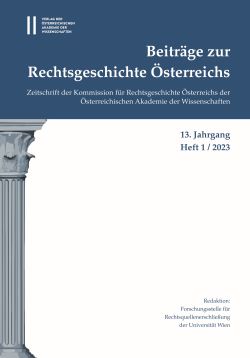
Beiträge zur Rechtsgeschichte Österreichs 13. Jahrgang Heft 1/2023, pp. 5-20, 2023/05/17

The article discusses the legal reasoning in the “Robotpatente”, which were issued for serfs in Bohemia between 1680 and 1738. Of special interest is the position of ‘natural equity’ (natürliche Billigkeit) in the hierarchy of legal norms within the text and the position of the whole “Robotpatente” within the hierarchy of norms in Habsburg Bohemia. Reflections on natural equity were based on Roman law, rather than on secular natural law theories. I argue that the “Robotpatente” were not aimed at changing present customary law and practical rules, their aim was to step in when laws and customs were silent. In the hierarchy of legal norms in the “Robotpatente” of 1680, 1717 and 1738 itself, ‘natural equity’ always came last. Its role was not to change or exclude the current rules, but to fill in the gaps between them. It is only in the great “Restored Robotpatent” of 1738 that the role of natural equity is differentiated. It is divided into four sections – while natural equity is used in the traditional way in the sections one and two, which regulate the relations between peasants and their landlords, it is almost missing in the section three, which is on the relations to the sovereign. Moreover, it is differentiated in section four, which discusses the implementation. Here, the role of ʺnatural equity” is foreseen only in chaotic accidental cases which defy all known rules. All written laws, urbaria and customary rules took precedence over natural equity. Even though the “Robotpatente” adjudicated all “ancient privileges” to be cancelled, it put forward “legal urbaria”’ as the best safeguard of justice for the peasants.
Keywords: Bohemia – codification – equity – natural law – Roman law – serfdom